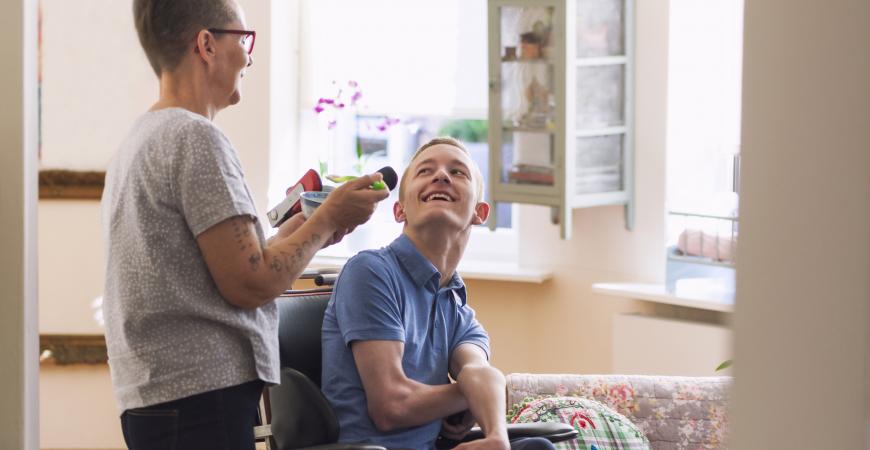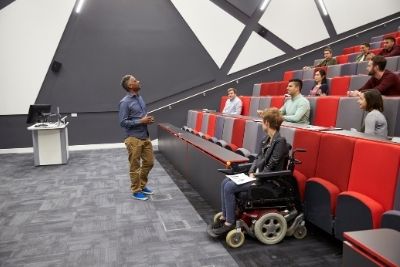
Campus residences, student facilities, and local transit services all strive to meet the accessibility needs of individuals. Newer buildings on school campuses will generally have accessibility features built into their design so that all individuals can use the same entrances, washrooms, and seating areas. Many older buildings will have been retrofitted with accessibility features that may be more cumbersome for students to use, such as ramps or accessible washrooms that are in inconvenient locations. Regardless of whether a building was designed to be accessible or has been retrofitted with accessible features, colleges and universities work hard to meet the accessibility needs of their students.
Residence Accessibility
 Most residence buildings offer accommodations to students with disabilities or other special needs. During the residence application process, there is often a Special Needs Form that students can complete and submit with their residence application.
Most residence buildings offer accommodations to students with disabilities or other special needs. During the residence application process, there is often a Special Needs Form that students can complete and submit with their residence application.
Residence accommodations may include:
- Wheelchair accessible room and bathroom
- Visual fire alarms
- Carpet-free rooms
- Extra-long beds
- Single rooms
- Rooms on a quiet floor
- Access to a calm room
Universities and colleges will generally do their best to accommodate for the needs of students with disabilities or other special needs. However, it is important to note that residences are high-density living environments and it can be difficult to accommodate for all special needs, particularly for students with environmental health concerns.
For specific information about accommodations in residence, students should contact the housing department at their college or university.
Off-Campus Housing
For those who choose not to live in residence, other options include living with family or finding rental housing with friends or alone. Many schools have offices that specifically help students find off-campus housing. These are listed in the residence section of each school in the Colleges and University sections. If a school does not have a specific Off-Campus Housing office to help with this, their residence or student life office may be able to offer other resources or recommendations (such as recommended websites).
Campus Accessibility

Student buildings on campus are required to have accessible entrances, washrooms, and parking available. Some schools and campuses provide detailed information about building accessibility online or on their campus maps. Other schools may not have this information readily available, and students and visitors will need to contact the school’s main information line or AS office directly for accessibility information.
Transit Services

Most schools either provide full-time students with a transit pass through fees included in tuition or allow students to purchase reduced fare transit passes with their student card. Tuition passes and fares for part-time students vary amongst schools and cities.
Transit accessibility varies from city to city. Most larger cities offer accessible buses on most of their regular routes. Cities that do not are often working towards increased accessibility of their transit system and may offer other options for riders with specialized needs.
Accessible transit features may include:
- Low floor buses with ramps
- Automated announcements and visual display of routes, destinations, or transit stops
- Priority seating
- Secured wheelchair and scooter positions
- Elevators and escalators in transit stations
Most cities also offer para-transport services for riders whose needs are not able to be met by their transit system. The range of services offered varies greatly between cities, from scheduled to on-demand pick-ups and drop-offs, individual or communal vehicles, and the degree to which the transport driver can aid the rider to and from the vehicle. Eligibility for para-transport services also varies from city to city and in relation to the accessibility of the regular transit system.

